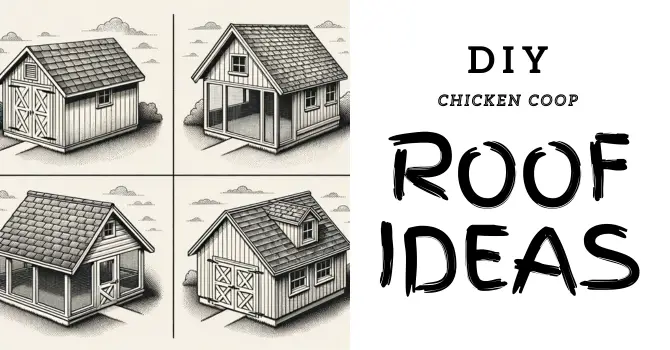Creating a DIY chicken coop roof requires a blend of creativity, practicality, and adherence to certain guidelines to ensure the safety and comfort of the chickens.
Raising chickens in your backyard can be a rewarding experience, but it does require some preparation and planning. One of the most important aspects of a chicken coop is the roof, which not only provides shelter from harsh weather conditions but also adds aesthetic appeal to your backyard.
A well-designed roof can ensure your chickens stay healthy and safe while also making your coop a charming addition to your property.
Key Takeaways:
- Various roof styles cater to different needs and aesthetics.
- Choosing the right materials is crucial for a long-lasting roof.
- Innovative DIY ideas can make your coop unique and functional.
Roof Styles
Shed Roofs
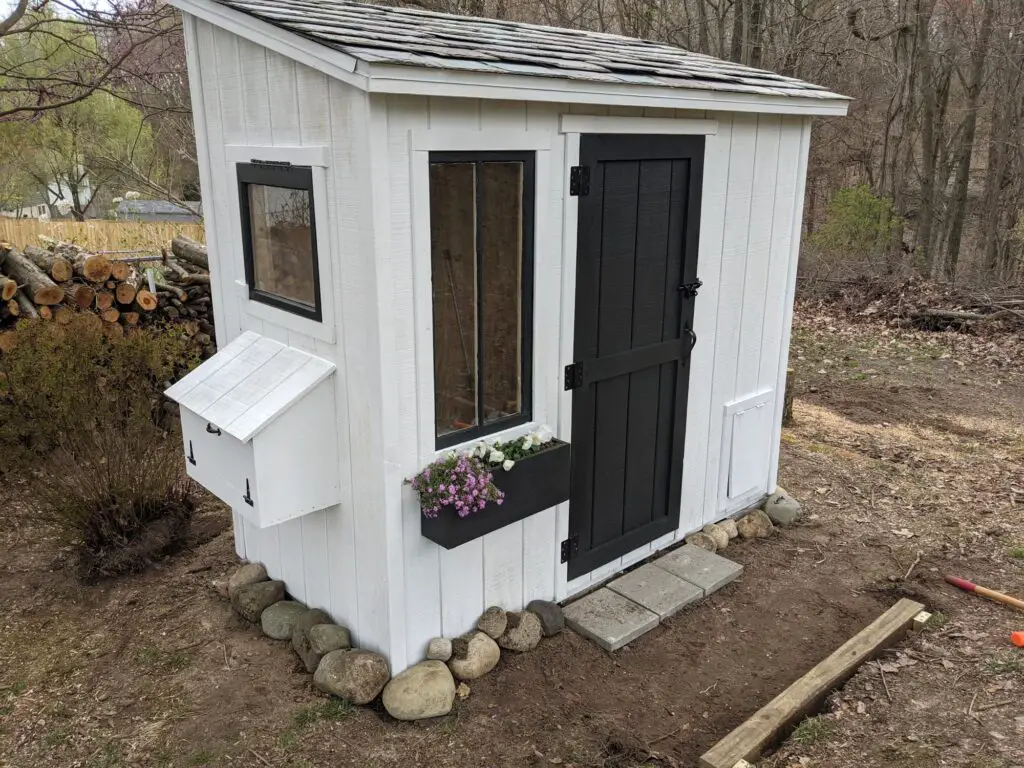
Shed roofs are a common choice due to their simplicity and effectiveness. They feature a single slope, making them easy to install. Moreover, they are a cost-effective option as they require fewer materials compared to other styles.
Here’s a breakdown of the advantages and drawbacks of shed roofs:
| Advantages | Drawbacks |
|---|---|
| Easy to install | Not suitable for larger coops |
| Cost-effective | |
| Good for small to medium coops |
Shed roofs are perfect for smaller coops and can withstand most weather conditions. They also allow for the installation of skylights or plexiglass for additional lighting within the coop.
Open-gable roofs
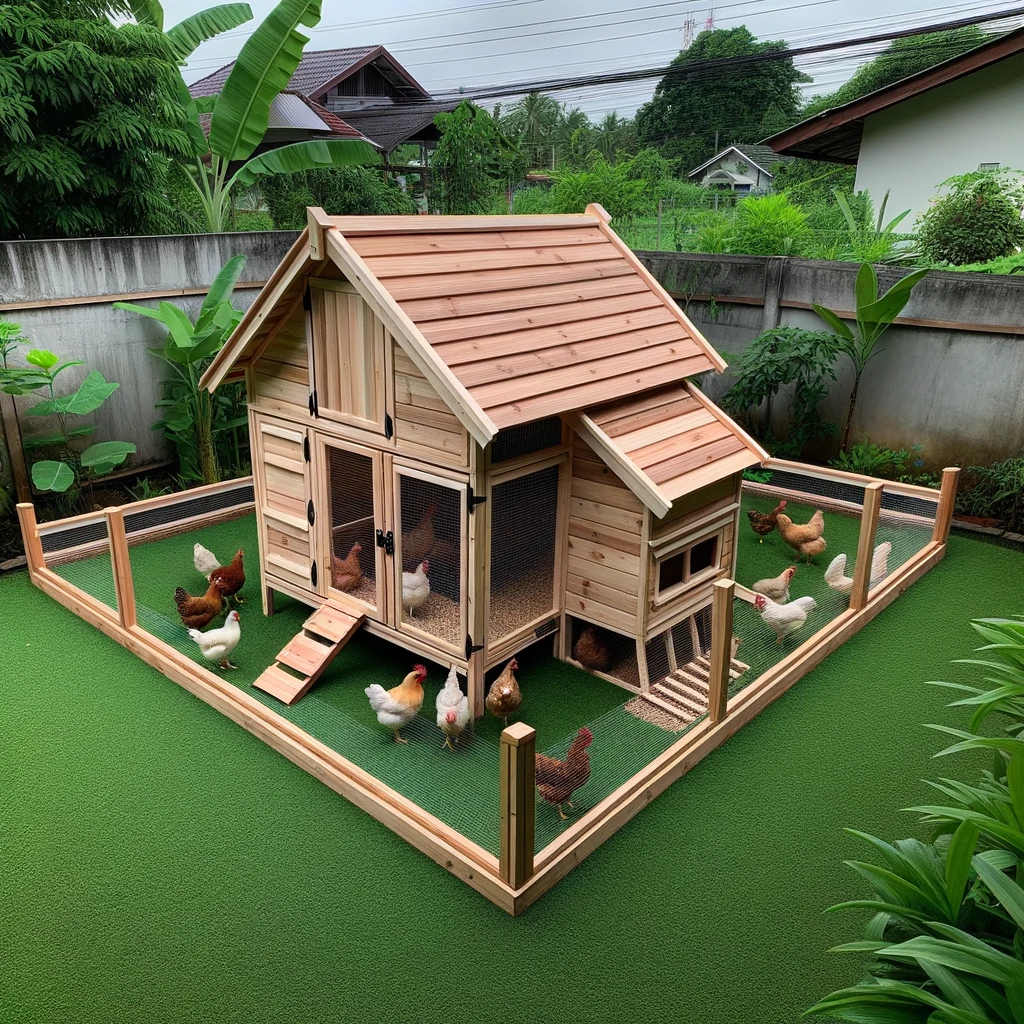
Open gable roofs, also known as pyramid roofs, have two sloping sides meeting at a peak. They are easy to design, affordable, and efficiently shed snow and rain. However, they might not stand strong against high-speed winds. Here are the pros and cons:
| Advantages | Drawbacks |
|---|---|
| Easy to design and build | Prone to wind damage |
| Affordable | Common design, less unique |
| Good for shedding snow and rain |
For those seeking a more traditional look, open-gable roofs are an ideal choice. They are also fairly straightforward for DIY enthusiasts to construct.
Read more on mistakes to avoid when building a chicken coop
Box Gable Roofs

Similar to open gable roofs, box gable roofs have closed ends, providing more insulation. They also offer a unique aesthetic compared to the open gable.
However, they may appear bulky on smaller coops and are still susceptible to wind damage.
| Advantages | Drawbacks |
|---|---|
| More insulation | Susceptible to wind damage |
| Unique aesthetic | May look bulky on smaller coops |
Box gable roofs provide both functionality and a distinct appearance, making them a favorable choice for many chicken keepers.
Gambrel Roofs
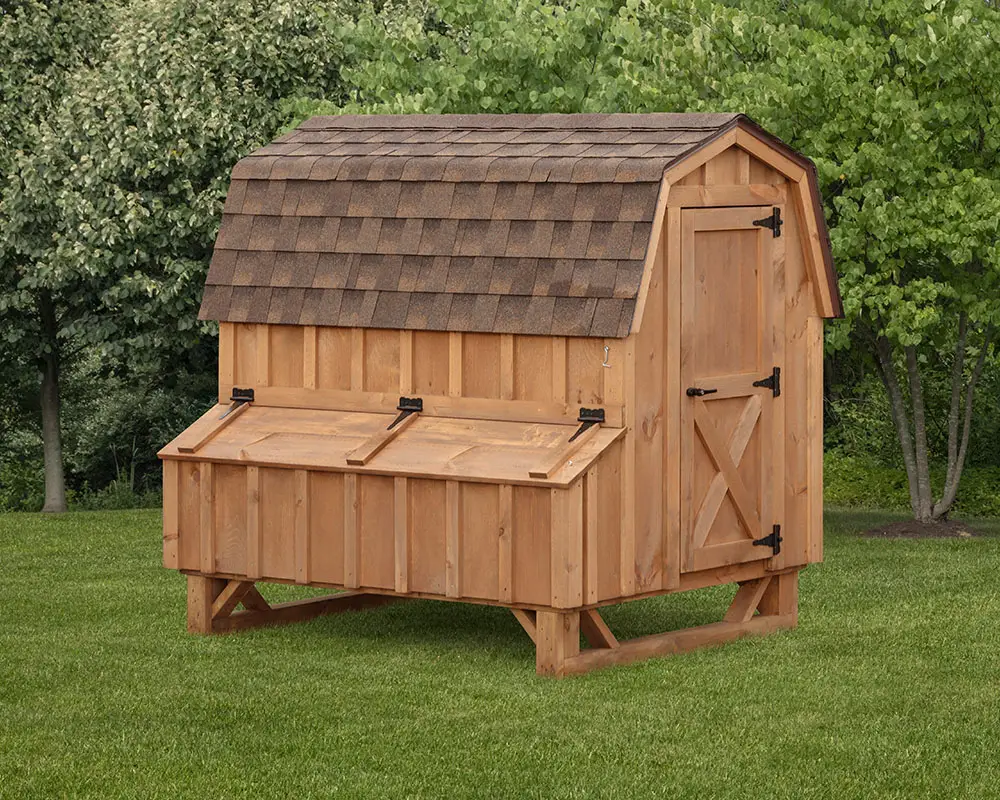
Gambrel roofs resemble old-fashioned barn roofs and provide extra space inside the coop. They are aesthetically pleasing and relatively easy to install, but they have poor resistance to adverse weather conditions.
| Advantages | Drawbacks |
|---|---|
| Spacious interior | Poor wind, snow, and rain resistance |
| Easy to install | Challenging to ventilate |
| Traditional barn aesthetic |
They are a perfect choice for those looking to have a spacious loft within the coop for storing feed, hay, and other supplies.
Roofing Materials
Plywood
Plywood is typically used as a base for the roofing material rather than the sole material. It can last a year or two without protection, but it’s advisable to use it alongside other materials.
| Advantages | Drawbacks |
|---|---|
| Affordable | Short lifespan if unprotected |
| Good base material |
While plywood is an economical choice, it’s crucial to ensure it’s adequately protected to prolong its lifespan.
Nails vs. Screws
The choice between nails and screws can impact the durability and ease of installation of your roof. Here’s a comparison to help you decide:
| Nails | Screws | |
|---|---|---|
| Cost | Cheaper | More expensive |
| Strength | Better shear strength | Better tensile strength |
| Ease of Installation | Easier | Requires pre-drilled holes |
Both nails and screws have their advantages, and the choice depends on personal preference and the specific requirements of your chicken coop roof project.
Read more on DIY Chicken Coop Building
Unique DIY Roof Ideas
Innovative DIY chicken coop roof ideas can add a touch of uniqueness to your backyard while ensuring the safety and comfort of your chickens. Below are some creative roofing ideas you might consider for your coop.
Living Roofs
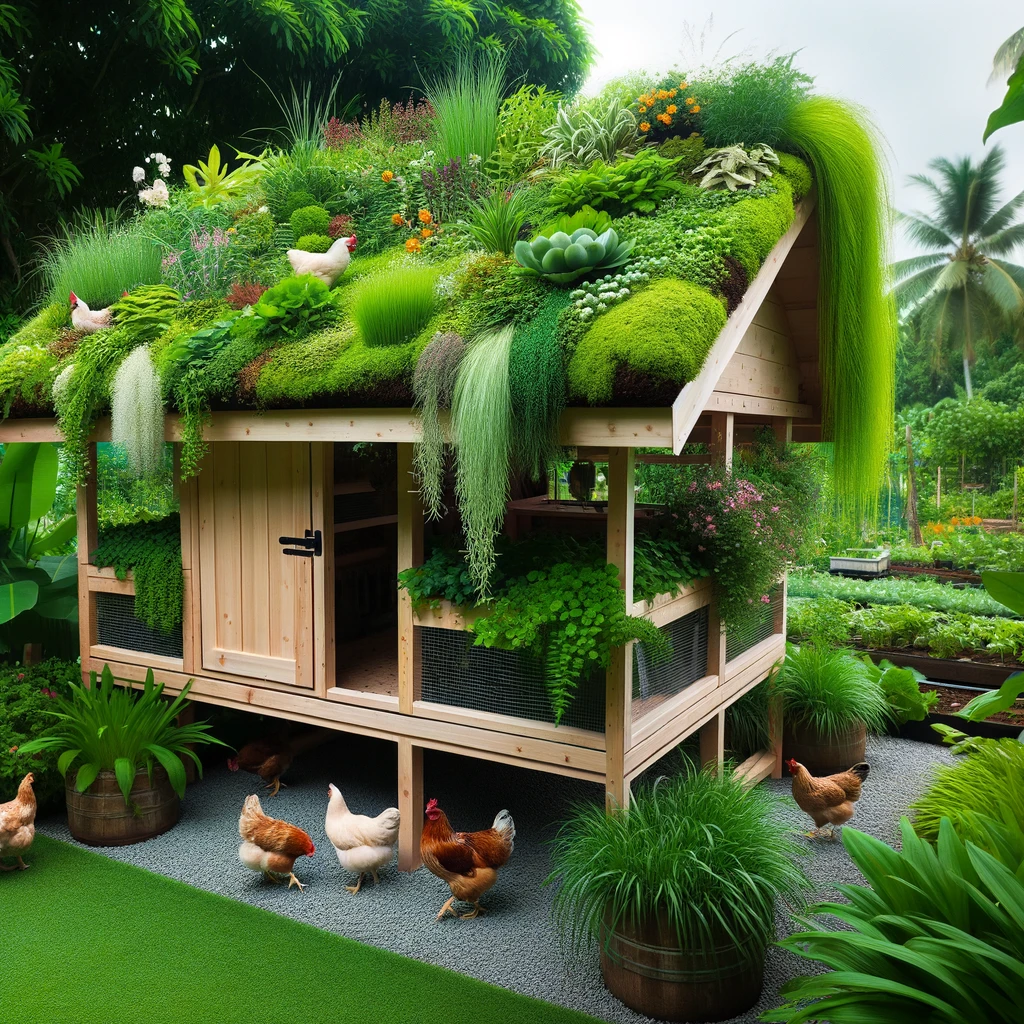
Living roofs, also known as green roofs, are an eco-friendly and visually appealing option. They involve growing plants on the roof, which can provide additional insulation and help keep the coop cool during the summer.
| Advantages | Drawbacks |
|---|---|
| Eco-friendly | Requires regular maintenance |
| Provides insulation | Initial setup can be challenging |
| Visually appealing |
Implementing a living roof can be a rewarding project, but it requires a sturdy structure to support the soil and plants.
Skylights and Transparent Roofing Panels
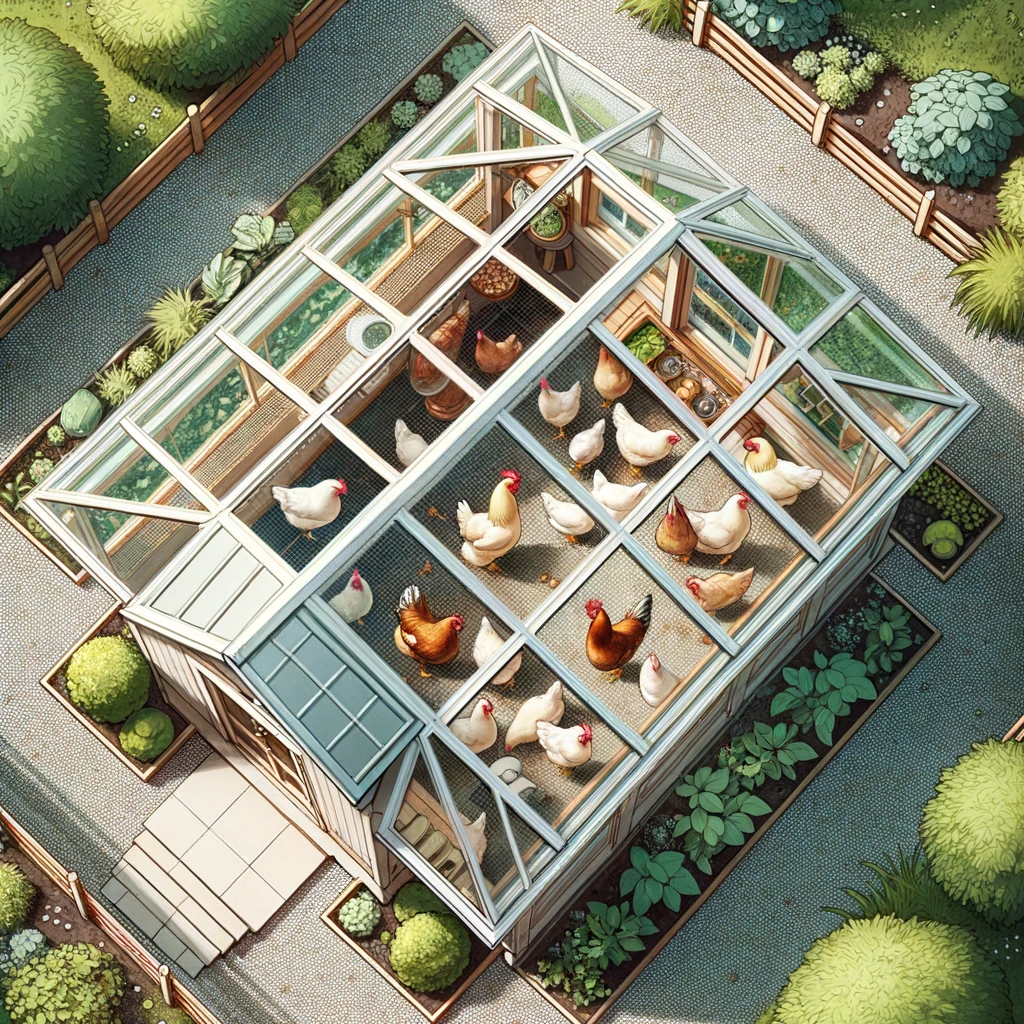
Installing skylights or transparent roofing panels can help to bring natural light into the coop, which is beneficial for the chickens and also helps to save on electricity costs.
| Advantages | Drawbacks |
|---|---|
| Natural lighting | May require professional installation |
| Energy saving | Potential heat loss during winter |
| Enhances coop aesthetics |
This roofing idea is perfect for those looking to create a bright and cheerful environment for their chickens.
Recycled Materials Roofing
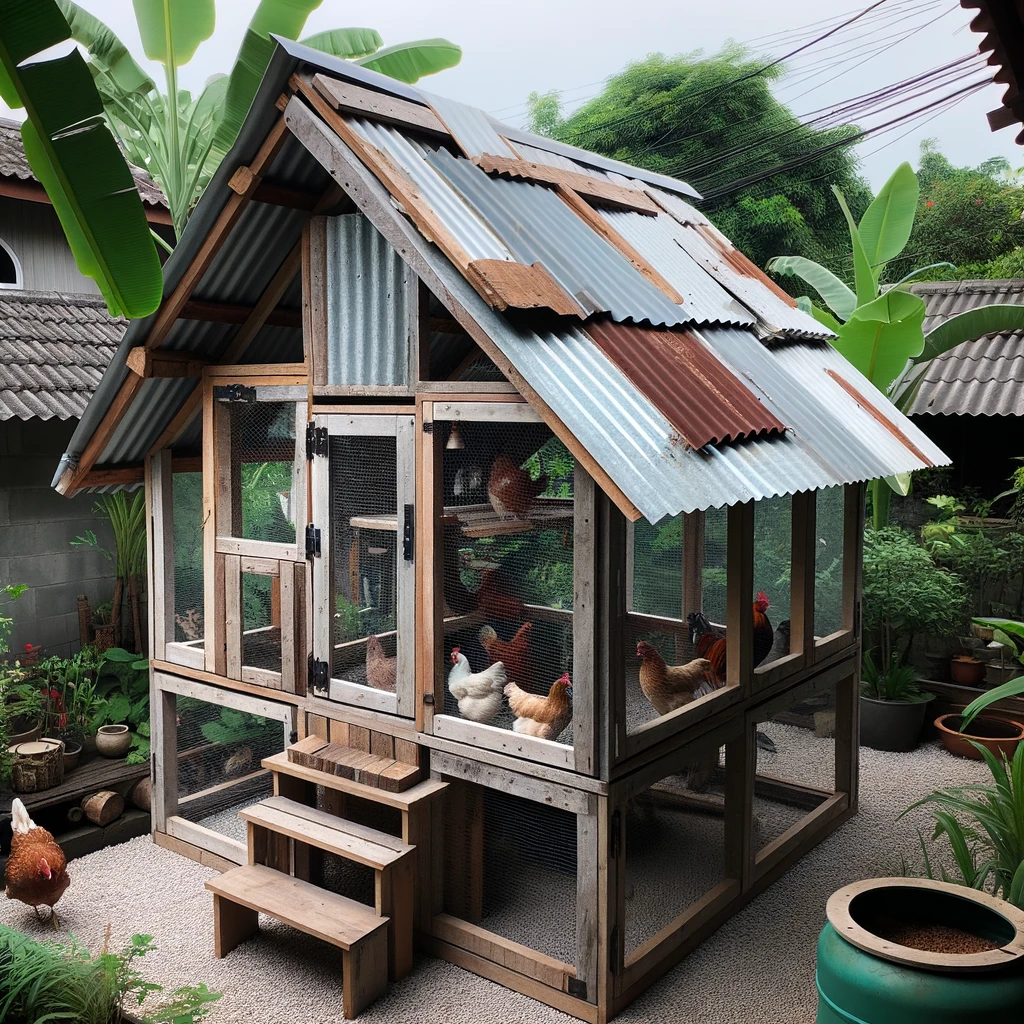
Utilizing recycled materials for roofing is an eco-friendly and cost-effective solution. Materials such as old metal sheets, plastic panels, or reclaimed wood can be used to create a functional and unique roof.
| Advantages | Drawbacks |
|---|---|
| Eco-friendly | May require additional treatments for durability |
| Cost-effective | Aesthetic may not appeal to everyone |
| Unique appearance |
Recycled materials roofing is a great way to reduce waste and create a one-of-a-kind chicken coop roof.
Building Process
Planning and Measurement
Proper planning and measurement are crucial steps in ensuring a successful roofing project. It’s essential to have a clear blueprint and accurate measurements before starting the construction.
- Blueprint: Having a clear blueprint helps to visualize the end result and provides a step-by-step guide during construction.
- Measurements: Accurate measurements are crucial to ensure the roofing materials fit perfectly and to avoid wastage.
Installing the Roofing Material
The installation process will vary depending on the roofing material and style chosen. It’s advisable to follow the manufacturer’s instructions or consult with a professional if necessary.
- Preparation: Prepare the surface by ensuring it’s clean and level.
- Installation: Carefully install the roofing material, ensuring it’s securely fastened to prevent leaks and damage.
Weatherproofing
Weatherproofing is essential to protect the coop and its inhabitants from adverse weather conditions. This involves sealing any gaps, installing guttering to manage rainwater, and insulating the coop if necessary.
- Sealing: Seal any gaps or cracks to prevent water ingress and drafts.
- Guttering: Install guttering to manage rainwater and prevent it from entering the coop.
Maintenance and Repairs
Regular maintenance and timely repairs are crucial to prolong the lifespan of your chicken coop roof and ensure the safety and comfort of your chickens.
Regular Inspection
Regular inspections can help to identify potential issues before they escalate, such as leaks, damage, or infestations.
- Check for Damage: Look for any signs of damage or wear and tear, especially after adverse weather conditions.
- Clear Debris: Keep the roof clear of debris, such as leaves, branches, or snow, to prevent damage and ensure proper drainage.
Cleaning and Repairs
Cleaning and repairs should be done as needed to keep the roof in good condition.
- Cleaning: Clean the roof regularly to remove any dirt, moss, or algae that could cause damage or block drainage.
- Repairs: Promptly repair any damage to prevent further deterioration and potential harm to your chickens.
Seasonal Maintenance
Seasonal maintenance can help to prepare the coop for changing weather conditions and ensure it remains a comfortable and safe environment for your chickens.
- Winter Preparations: Insulate the coop, clear snow from the roof, and check for drafts or leaks.
- Summer Preparations: Ensure the coop is well-ventilated, clean the roof, and check for any signs of heat stress in your chickens.
Frequently Asked Questions
What are the most durable materials for a chicken coop roof?
The durability of your chicken coop roof largely depends on the materials used. Some of the most durable materials include:
- Metal Roofing: Highly durable, weather-resistant, and offers excellent protection against predators.
- Asphalt Shingles: They are durable and provide good insulation and protection against adverse weather conditions.
- Corrugated plastic or polycarbonate: These materials are durable, lightweight, and provide a good level of protection against rain and snow.
Each material has its own set of advantages and potential drawbacks, so it’s essential to choose one that suits your specific needs and local climate conditions.
How can I weatherproof my chicken coop roof?
Weatherproofing your chicken coop roof involves several steps:
- Sealing: Ensure all seams and edges are sealed to prevent water ingress.
- Insulation: Insulate the roof to keep the coop warm during the winter and cool during the summer.
- Guttering: Install gutters to manage rainwater and prevent it from entering the coop.
- Proper Overhang: Ensure the roof has a proper overhang to provide additional protection against rain and snow.
By following these steps, you can significantly improve the weather resistance of your chicken coop roof.
Can I install solar panels on my chicken coop roof?
Yes, you can install solar panels on your chicken coop roof, provided the structure is strong enough to support them. Solar panels can provide a sustainable source of energy for heating, lighting, and other electrical needs within the coop. However, it’s advisable to consult with a professional to ensure the installation is safe and the roof can handle the additional weight.
Conclusion
In embarking on the journey of building a DIY chicken coop roof, you not only create a shelter for your chickens but also have the opportunity to enhance the aesthetics of your backyard.
The choice of roof style and materials significantly impacts the overall functionality and durability of the coop. Whether opting for a traditional gable roof, an eco-friendly living roof, or utilizing recycled materials, each choice comes with its unique set of advantages and considerations.
The process, although requiring a meticulous approach, can be incredibly rewarding. With the insights provided in this guide, you are now better equipped to make informed decisions as you work on your chicken coop roofing project, ensuring a comfortable and secure habitat for your chickens.
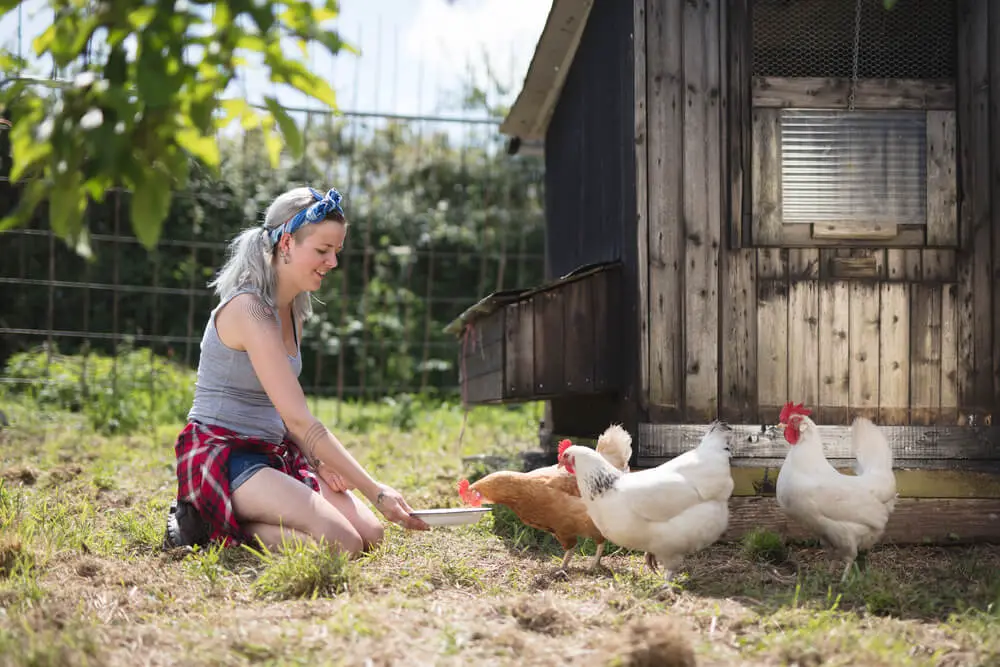
Shannon Stansberry has been engaged in the business of raising chickens for more than 12 years. In 2016, she accomplished the Agriculture & Natural Resources program at Mt. San Antonio College. At present, she tends to more than 80 chickens on her 4-hectare farm. Shannon regularly shares her insights and experience on how to raise healthy and contented chickens on the platform Typesofchickens.com
